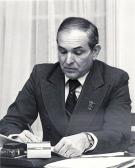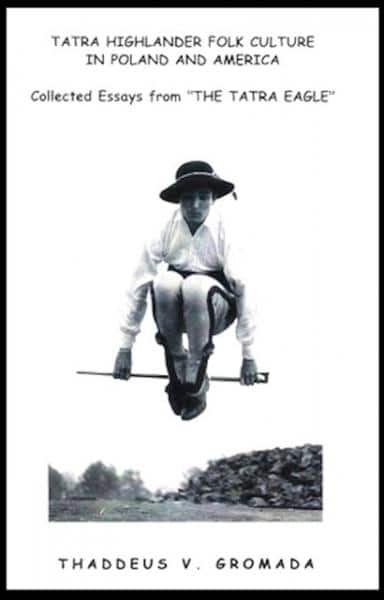
Thaddeus Gromada
Professor Emeritus, New Jersey City University & Executive Director, PIASA (ret)
When did you first develop an interest in Slavic, East European and Eurasian Studies?
As a son of Polish immigrants whose parents came to the United States in 1927 from newly resurrected Poland, it’s not too surprising that I became interested in Slavic and East European studies. This interest came at a very early age and was intensified by the invasion of Poland both by Germany and Soviet Russia in September 1939. My parents became distraught by this catastrophe and were deeply concerned about the fate of their families, friends and fellow Poles. Consequently, they were eager for the latest news about the war in Europe chiefly available on the radio and in newspapers. As a bilingual boy, not yet a teenager, I was given the task of listening to the news on the radio and reporting them in Polish to my parents. This proved to be a valuable exercise for me since it helped strengthen both my English and Polish language skills and encouraged me to learn more about Poland and its relationship to Eastern and Western Europe. Luckily, the Reid Memorial Public Library in the industrial city of Passaic, N.J. was only a few blocks away from home. One day in 1943 while in the library searching for books on Poland I spotted a brand new book, The History of Poland by Oscar Halecki published by Roy Publishers in New York. I had no idea who Halecki was, but his book made a great impact on me, a fourteen year old at the time.
A year later, Halecki made an even greater impression on me when I heard his voice on New York’s radio station WMCA during the “New York Town Hall Meeting on the Air” admirably defending Poland’s rights following the disastrous decisions made by the Big Three Summit Meeting at Teheran and later at Yalta. My dream now was to study the history of Poland and Eastern Europe under Halecki’s mentorship at Fordham University where this great Polish historian, now a political refugee, was a Professor at the Graduate School. The dream was finally realized in the fall of 1951 after graduating from Seton Hall University with a Bachelors degree. My graduate degrees MA (1953) and Ph.D. (1966) in the History of East Central Europe were received under Halecki’s direction interrupted for a few years by my stint in the U.S. Army during the Korean War. At Fordham Halecki convinced me that European history was in need of revision. I could not help but agree that too often European History was written and taught from the perspective of great powers and that the role of East Central European nations like Poland was ignored and relegated to a tangential place. This was a distortion that demanded a correction but, as Halecki insisted, always based on highest scholarly standards. I decided that I wanted to be part of the corrective efforts in New Jersey’s higher education. So during my academic life at the New Jersey City University from 1959 to 1992 I did my best in my teaching, research in Poland and the former Czechoslovakia, and other activities to give proper attention to Eastern Europe in general Western Civ and European courses, introduced several elective courses on Eastern Europe , organized conferences, symposia, etc., sponsored Slavic East European Student Club. When Governor Thomas H. Kean of New Jersey appointed me Chairman of a Commission on Eastern European History in 1985 it gave me an opportunity “to conduct a thorough study of public school curriculum including textbooks” and make recommendations for needed improvements.
How have your interests changed since then?
I also became very much interested in the history of immigration to the United States. This interest was heightened by the “New Pluralism/New Ethnicity” movement that swept our country in anticipation of America’s Bicentennial in 1976. I joined this national movement led by Michael Novak, Irving Levine and others that rejected the “Melting Pot Theory” and instead advocated “Cultural Pluralism” reflecting the diverse pluralistic nature of American society. The corollary to this was that curricula in the schools and colleges should reflect the diversity in the American experience which included Euro-American ethnics, especially those of southern and east European background. The “Ethnic Heritage Act” enacted by Congress in 1972 did much to legitimize ethnicity and ethnic studies. New Jersey City University located in the shadow of the Statue of Liberty and Ellis Island in Jersey City was a natural place for a Multi-Ethnic Studies Program and a Center of American Pluralism which I organized and directed from the early 1970’s. New courses were introduced such as America’s European Heritage, History of American Immigration, Ethnic and Racial Stereotypes in Film and Television, etc.; conferences and special cultural programs were organized not only for faculty and students but also for the public. I found that U.S. Immigration History research could be markedly improved if one had additional language skills and knowledge of the European background of the peoples immigrating. So a scholar in East European studies could make a valuable contribution to the study of the millions of East Europeans who poured into America in the 19th and early 20th century.
What is your current research/work project?
When I first became Executive Director of the Polish Institute of Arts & Sciences of America (PIASA) in 1991 I wrote The First 50 Years: A Historical Survey of PIASA 1942-1992. Since I retired from PIASA in 2011, I thought it would be worthwhile to update that survey in connection with the forthcoming 75th anniversary in 2017. In addition I continue co-editing with my sister Jane Gromada Kedron a quarterly publication Tatrzański Orzeł/The Tatra Eagle devoted to the folk culture of Podhale and to the Tatra Highlander (góral) diaspora in America. Both of our parents were Tatra 
What do you value about your ASEEES membership?
In the first Directory of Members of the AAASS (later changed to ASEEES) published in 1961 you will find my name listed. I always thought that it was my professional responsibility to be a member of the Association. By getting the Slavic Review and by attending the National Conventions one could keep up with the latest research and developments in one’s field, have an opportunity to meet colleagues from all parts of the country and do some networking, and share research by presenting papers and writing articles and reviews. One of the first actions I took when I became Secretary General of the Polish Institute in 1972 was to arrange for the Institute to become an affiliate and later institutional member of the AAASS. From then on, it became visible at Annual National Conventions and more involved in mainstream American academic circles.
Besides your professional work, what other interests and/or hobbies do you enjoy?
I have always enjoyed classical music especially music for the violin. In my younger days I even played on the violin. I like to swim and exercise sensibly, travel to historic locations and collect folkloristic art.